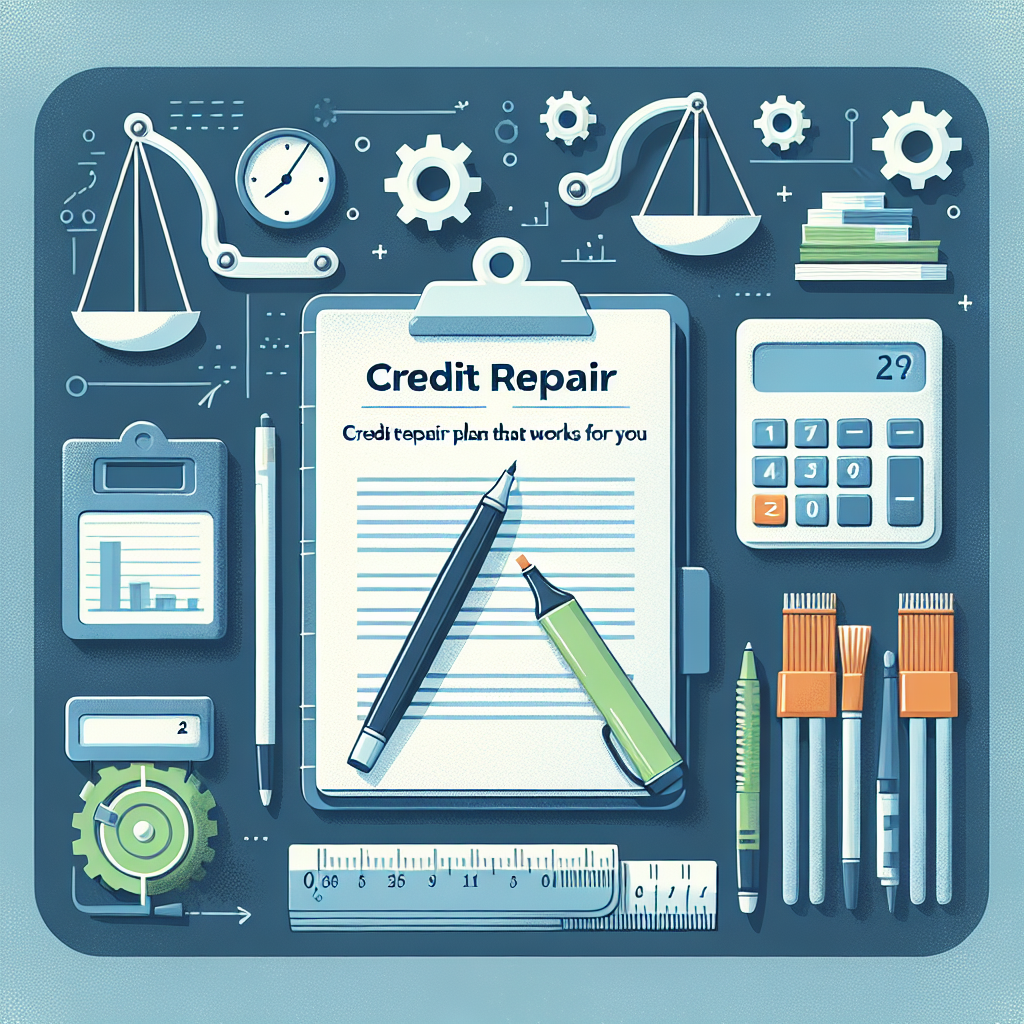Maintaining a healthy credit score is essential for securing loans, mortgages, and favorable interest rates. If your credit score has suffered due to late payments, defaults, or high credit utilization, don’t despair. With a tailored credit repair plan, you can improve your creditworthiness over time. In this article, we will explore effective strategies to build a personalized credit repair plan that suits your needs.
Understanding Your Credit Report
What is a Credit Report?
Your credit report is a detailed account of your credit history, including information about your personal details, credit accounts, payment history, and any public records like bankruptcies. It is essential to understand this document as it influences your credit score.
How to Obtain Your Credit Report
You are entitled to one free credit report per year from each of the three major credit bureaus: Experian, TransUnion, and Equifax. You can access your reports at AnnualCreditReport.com. Reviewing your report regularly allows you to identify errors or areas that need improvement.
Identifying Negative Items on Your Credit Report
Common Negative Items
Negative items can significantly impact your credit score. They may include:
- Late payments
- Charge-offs
- Collection accounts
- Bankruptcies
- Hard inquiries
How to Dispute Errors
If you spot inaccuracies on your credit report, you can dispute them with the credit bureau. Gather documentation to support your claim and submit a formal dispute online or via mail. The bureau must investigate and respond within 30 days.
Setting Goals for Your Credit Repair Plan
Short-Term Goals
Start by establishing short-term goals that are achievable within a few months. These may include:
- Paying down credit card balances
- Making all payments on time
- Disputing any inaccuracies on your credit report
Long-Term Goals
Next, set long-term goals to ensure sustained credit improvement over the next 6-12 months and beyond. Consider goals such as:
- Achieving a specific credit score
- Reducing your credit utilization ratio below 30%
- Diversifying your credit mix
Building a Budget to Pay Down Debts
Assessing Your Current Financial Situation
Creating a budget is essential in your credit repair plan. Start by listing all your monthly income and expenses. Review areas where you can cut costs to allocate more funds toward paying down debts.
Debt Snowball vs. Debt Avalanche
Two popular strategies for paying off debt are the debt snowball and debt avalanche methods:
- Debt Snowball: Focus on paying off the smallest debts first, gaining momentum as you eliminate each one.
- Debt Avalanche: Concentrate on paying off the debts with the highest interest rates first, saving you money in the long run.
Establishing Good Credit Habits
Timely Payments
Consistent on-time payments are crucial for improving your credit score. Set up automatic payments or reminders to ensure you never miss a due date.
Lowering Your Credit Utilization
Aim to keep your credit utilization ratio—the amount of credit you’re using compared to your total available credit—below 30%. Pay off balances each month and request credit limit increases if necessary.
Building Credit with New Accounts
Opening new credit accounts responsibly can help improve your credit mix and overall score. Consider secured credit cards or credit-builder loans, but ensure you can manage them effectively.
Monitoring Your Progress
Regularly Check Your Credit Score
Use free credit score monitoring tools to keep track of your credit score changes. This will help you gauge the effectiveness of your credit repair plan and adjust your strategy accordingly.
Celebrate Small Wins
Acknowledge and celebrate progress, whether it is a higher credit score, paying off a debt, or successfully disputing an inaccuracy. Celebrating small victories keeps you motivated to stick with your plan.
Seeking Professional Help
When to Consider Credit Repair Services
If you find it challenging to manage your credit repair plan or have complex issues, consider consulting a credit repair agency. Research reputable firms and understand their processes, fees, and reviews to ensure you choose one that fits your needs.
Conclusion
Creating a credit repair plan that works for you involves assessing your current credit situation, setting realistic goals, establishing good financial habits, and monitoring your progress. Remember, credit repair is a journey that requires patience and perseverance. By following the strategies outlined in this article, you can regain control of your credit and work towards a healthy financial future. Start today, and take the first step toward improving your credit score!

